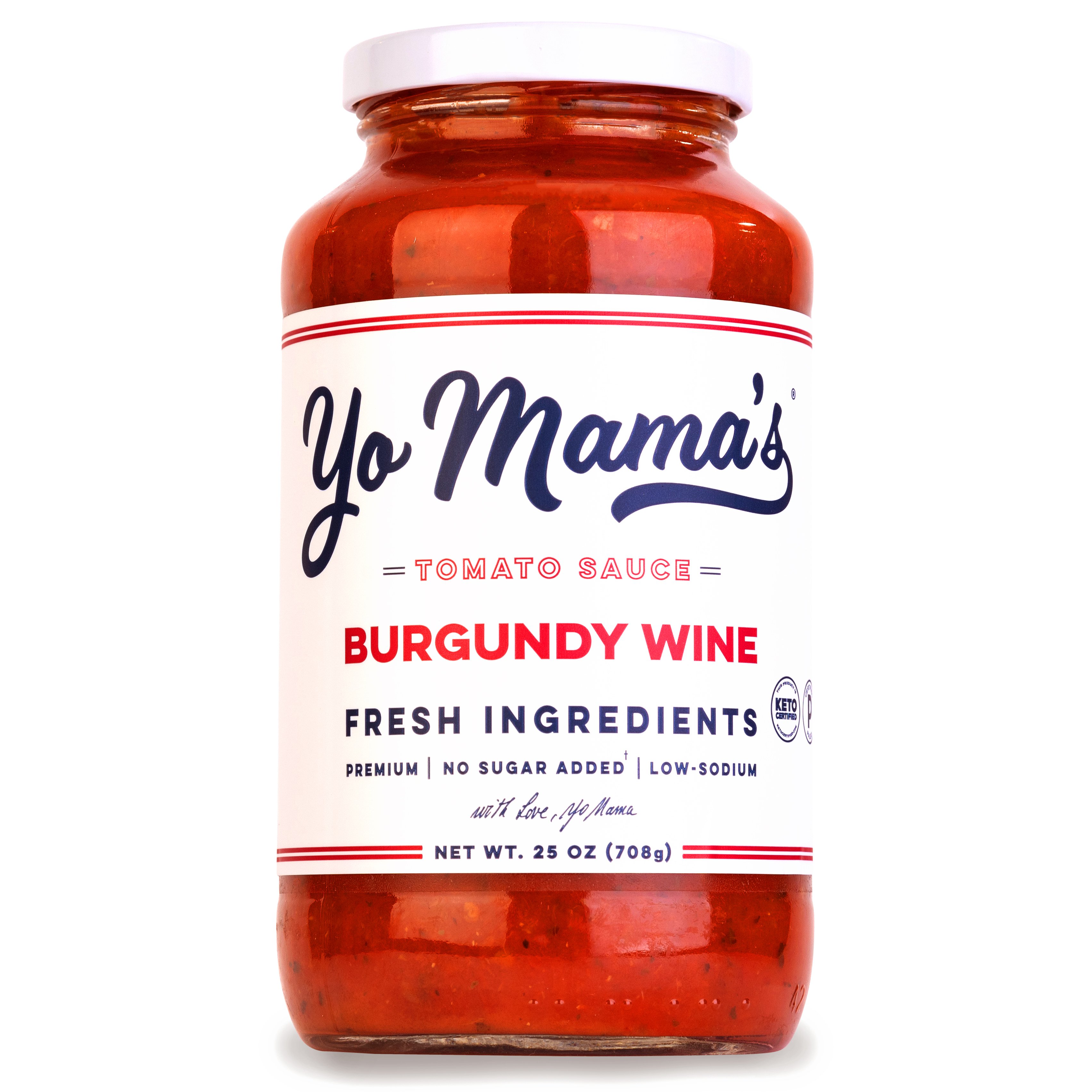Whether you’re a seasoned chef or an enthusiastic home cook, mastering this method can transform your dishes and impress even the most discerning palates. The concept of "reversing" a sauce might sound unconventional, but it’s rooted in centuries of culinary experimentation. By flipping the order of ingredient incorporation and adjusting cooking techniques, you can unlock new dimensions of flavor and texture. Burgundy sauce in reverse draws inspiration from the rich culinary traditions of France, particularly the famed Burgundy region known for its robust wines and hearty cuisine. Traditionally, Burgundy sauce is a velvety blend of red wine, shallots, herbs, and demi-glace, simmered to perfection. However, the reverse method challenges the norm by starting with the wine reduction and layering other elements afterward. This approach enhances the wine’s natural depth while allowing other ingredients to shine through without being overpowered. The result? A sauce that’s not only more refined but also adaptable to a variety of dishes, from classic beef bourguignon to modern vegetarian creations. In this article, we’ll dive deep into the art of burgundy sauce in reverse, exploring its origins, techniques, and applications. You’ll discover how this innovative method can revolutionize your cooking, whether you’re preparing a dinner party centerpiece or a simple weeknight meal. By the end, you’ll have all the tools and knowledge you need to confidently incorporate this technique into your repertoire. So, are you ready to uncover the secrets of burgundy sauce in reverse and take your culinary skills to the next level?
- What is Burgundy Sauce in Reverse?
- The History and Origins of Burgundy Sauce
- How Does Reversing the Process Change the Flavor?
- Step-by-Step Guide to Making Burgundy Sauce in Reverse
- What Are the Best Dishes to Pair with Burgundy Sauce?
- Common Mistakes to Avoid When Making Burgundy Sauce in Reverse
- Can Burgundy Sauce in Reverse Be Made Vegan?
- Frequently Asked Questions About Burgundy Sauce in Reverse
What is Burgundy Sauce in Reverse?
At its core, burgundy sauce in reverse is a creative reinterpretation of a classic French sauce. But what exactly does "in reverse" mean, and why does it matter? To answer this, let’s break down the traditional process of making burgundy sauce. Typically, you’d start by sautéing shallots and aromatics, then deglazing with red wine, and finally adding demi-glace or stock to simmer and reduce. The reverse method flips this sequence entirely, beginning with the wine reduction and introducing other elements later. This subtle shift in order transforms the sauce’s flavor profile, texture, and overall impact. The process of making burgundy sauce in reverse begins with reducing the wine to its essence. This step concentrates the wine’s natural sugars, tannins, and aromatic compounds, creating a robust base that serves as the sauce’s backbone. Once the reduction is complete, other ingredients like shallots, garlic, herbs, and stock are incorporated. This delayed addition ensures that each component retains its distinct flavor without being overwhelmed by the wine. The result is a sauce that’s more balanced and nuanced, with layers of complexity that traditional methods often struggle to achieve. But why is this technique so effective? The answer lies in the science of flavor development. By reducing the wine first, you create a foundation that amplifies its inherent qualities. When other ingredients are added later, they complement rather than compete with the wine’s profile. This method also allows for greater flexibility, as you can adjust the intensity of the wine or the richness of the stock to suit your preferences. Whether you’re aiming for a bold, wine-forward sauce or a more subtle accompaniment, burgundy sauce in reverse offers unparalleled control and precision.
Key Ingredients for Burgundy Sauce in Reverse
To master this technique, it’s essential to start with high-quality ingredients. The star of the show, of course, is the red wine. Opt for a full-bodied Burgundy wine or a similar varietal like Pinot Noir, which offers the perfect balance of acidity and fruitiness. Shallots and garlic provide aromatic depth, while fresh herbs like thyme and bay leaves add a fragrant touch. For the liquid base, a rich demi-glace or beef stock works wonders, but vegetable stock can also be used for a lighter alternative. Finally, a pat of butter at the end lends a velvety finish, tying all the elements together.
Read also:Winter Phenomenon Chicago Frost Quakes Explained
Tools You’ll Need
Creating burgundy sauce in reverse doesn’t require fancy equipment, but a few essential tools can make the process smoother. A heavy-bottomed saucepan ensures even heat distribution, preventing the wine from burning during reduction. A fine-mesh strainer is handy for achieving a silky texture, while a wooden spoon or spatula helps with stirring and deglazing. For those who want to take their sauce to the next level, an immersion blender can be used to emulsify the final product, resulting in an ultra-smooth consistency.
The History and Origins of Burgundy Sauce
To truly appreciate burgundy sauce in reverse, it’s important to understand its roots in French culinary tradition. Burgundy sauce, or "sauce Bourguignonne," has long been a staple of French gastronomy, celebrated for its rich, wine-infused flavor. The sauce’s origins can be traced back to the Burgundy region, a lush area in eastern France renowned for its vineyards and cattle. The region’s robust red wines, particularly those made from Pinot Noir grapes, became the foundation for many classic sauces, including the one that bears its name. The traditional preparation of burgundy sauce reflects the French philosophy of cooking, which emphasizes layering flavors to create depth and harmony. Historically, this sauce was paired with hearty dishes like beef bourguignon, a slow-cooked stew that combines tender beef, earthy mushrooms, and aromatic herbs. The sauce’s role was to enhance these flavors, providing a luscious, wine-based complement that tied the dish together. Over time, burgundy sauce became synonymous with elegance and refinement, gracing the tables of fine dining establishments and home kitchens alike.
The Evolution of Burgundy Sauce Techniques
As culinary techniques evolved, so too did the methods for preparing burgundy sauce. Chefs began experimenting with different approaches, seeking ways to elevate the sauce’s complexity and versatility. This spirit of innovation eventually led to the development of burgundy sauce in reverse, a technique that challenges conventional wisdom while staying true to its French heritage. By flipping the order of ingredient incorporation, this method pays homage to tradition while embracing modern creativity.
Why the Reverse Method Gained Popularity
The rise of burgundy sauce in reverse can be attributed to its ability to enhance flavor without sacrificing simplicity. In an era where home cooks and professional chefs alike are seeking ways to elevate their dishes, this technique offers a perfect balance of innovation and accessibility. Its growing popularity is also fueled by the increasing demand for customizable recipes that cater to diverse tastes and dietary preferences. Whether you’re a purist who values authenticity or an innovator eager to push culinary boundaries, burgundy sauce in reverse has something to offer.
How Does Reversing the Process Change the Flavor?
The magic of burgundy sauce in reverse lies in its ability to transform the flavor profile of a classic sauce. But how exactly does reversing the process achieve this? The answer lies in the interplay of chemistry and technique. When you reduce the wine first, you concentrate its natural sugars and tannins, creating a more intense and complex base. This concentrated reduction serves as the foundation for the sauce, allowing other ingredients to build upon its depth without being overshadowed. One of the most noticeable differences is the sauce’s balance. In traditional methods, the wine is often diluted by stock or demi-glace before it has a chance to fully develop its flavor. By reversing the process, you give the wine the spotlight it deserves, ensuring that its unique characteristics shine through. This results in a sauce that’s not only more flavorful but also more versatile. Whether you’re pairing it with beef, chicken, or even vegetables, burgundy sauce in reverse adapts seamlessly to a variety of dishes.
The Role of Aromatics in Flavor Enhancement
Another key factor is the role of aromatics like shallots, garlic, and herbs. In the reverse method, these ingredients are added after the wine reduction, allowing their flavors to meld with the concentrated base without becoming overpowering. This delayed incorporation preserves their freshness and vibrancy, contributing to a sauce that’s both rich and nuanced. The result is a harmonious blend of flavors that’s greater than the sum of its parts.
Read also:Extended Guide To Kroger Christmas Hours Holiday Shopping Made Easy
Texture and Mouthfeel: A Game-Changer
Beyond flavor, the reverse method also impacts the sauce’s texture and mouthfeel. By reducing the wine first, you create a thicker, more viscous base that emulsifies more effectively with other liquids. This leads to a smoother, silkier sauce that coats your ingredients beautifully. The addition of butter at the end further enhances this effect, lending a luxurious finish that’s sure to impress.
Step-by-Step Guide to Making Burgundy Sauce in Reverse
Now that we’ve explored the theory behind burgundy sauce in reverse, let’s dive into the practical steps for making it. Follow this detailed guide to create a sauce that’s rich, flavorful, and perfectly balanced.
Step 1: Selecting and Reducing the Wine
Begin by choosing a high-quality red wine. A full-bodied Burgundy or Pinot Noir is ideal, as its acidity and fruitiness provide the perfect foundation. Pour the wine into a heavy-bottomed saucepan and bring it to a gentle simmer over medium heat. Allow it to reduce by about half, stirring occasionally to prevent burning. This process concentrates the wine’s natural sugars and tannins, creating a robust base for your sauce.
Step 2: Adding Aromatics and Herbs
Once the wine has reduced, it’s time to introduce the aromatics. Sauté finely chopped shallots and garlic in a separate pan until they’re soft and translucent. Add them to the reduced wine along with fresh herbs like thyme and bay leaves. Let the mixture simmer for 10-15 minutes, allowing the flavors to meld and deepen.
Step 3: Incorporating Stock and Finishing Touches
Next, pour in your chosen stock—beef, chicken, or vegetable—and bring the mixture to a gentle simmer. Allow it to reduce slightly, thickening the sauce to your desired consistency. Finish by whisking in a pat of butter for a velvety texture and glossy finish. Strain the sauce through a fine-mesh sieve to remove any solids, resulting in a smooth, restaurant-quality sauce.
What Are the Best Dishes to Pair with Burgundy Sauce?
Burgundy sauce in reverse is incredibly versatile, making it a perfect accompaniment for a wide range of dishes. Its rich, wine-based flavor pairs beautifully with proteins, vegetables, and even grains. Here are some ideas to inspire your next culinary creation.
Classic Pairings: Beef and Lamb
For a traditional twist, serve burgundy sauce in reverse with beef or lamb dishes. It’s an ideal match for beef bourguignon, roasted lamb chops, or even a simple steak. The sauce’s depth complements the richness of the meat, creating a harmonious balance of flavors.
Modern Twists: Vegetarian and Vegan Options
Looking to cater to plant-based diets? Burgundy sauce in reverse works wonders with roasted vegetables like mushrooms, carrots, and parsnips. It can also be paired with hearty grains like farro or quinoa for a satisfying vegetarian meal. For a vegan version, substitute vegetable stock and use a plant-based butter.
Common Mistakes to Avoid When Making Burgundy Sauce in Reverse
Even the most experienced cooks can make mistakes when trying a new technique. Here are some common pitfalls to watch out for when making burgundy sauce in reverse.
Over-Reducing the Wine
While reducing the wine is essential, overdoing it can lead to bitterness. Keep a close eye on the reduction process and remove it from heat once it’s reduced by about half.
Skipping the Straining Step
Straining the sauce might seem like an extra step, but it’s crucial for achieving a smooth, professional finish. Don’t skip this step if you

